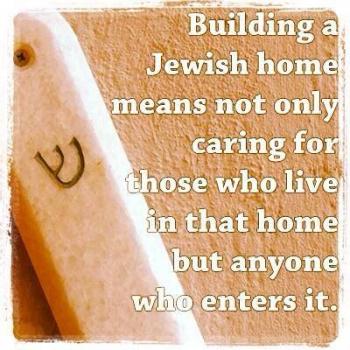By Gregory
It seems to me that all the world’s great religious traditions have similar structures, core elements that comprise the tradition and give it form. I’ve spoken of these before, so I’ll be brief:
The Core Elements of Religion
Myth – great stories and narratives that convey fundamental truths that help a people form an identity, discern right from wrong, find their place in the world, and offer wisdom on how to live. Myth tends to blend history with symbolism – the core message of the myth is true, the details may or may not be. Many traditions enshrine their myths in sacred texts.
Symbols – things or activities that represent deeper meanings and often encapsulate the central meaning of myths.
Rituals – liturgies and practices that aim at the transformation of the conscious and unconscious mind. Rituals allow us to engage myth and thus be transformed by the truths we reenact and participate in.
Interpretative Authorities – persons, offices, or institutional structures that provide authoritative interpretation – or at least set parameters – for the discussion, application, and practice of ritual, myth, and symbol.
Wisdom Teachings – teachings, doctrines, dogmas, or precepts that contain pivotal insights into how to live, treat others, and interpret the world. These teachings are elaborations and developments on the core truths contained in myth, ritual, and symbol.
There are other aspects common to most religions – a community of believers, entry requirements into that community, buildings, institutional structures, habits, and so on. The older a tradition, usually the more complex and rich its components.
Examples
Let’s take Christianity and Judaism as examples.
Myths – the creation narratives in Genesis, the Exodus, the giving of the Covenant, Jesus’ birth narratives, the teachings on the Kingdom, the Passion and Resurrection, Pentecost, and so on.
Symbols – Torah scrolls, tallit, Shabbat candles, the Ark, Challah, the Cross, the Fish, the Dove, bread and wine.
Rituals – Kiddush, Shabbat, Eucharist/Mass, Baptism, and so on.
Interpretative Authorities – Talmud, Rabbinical Conferences, Boards of Elders, the Pope, Magisterium, Councils, and so on.
Wisdom Teachings – Love your neighbor as yourself. Help the widows and the orphans. Human dignity and the Divine Image. Blessed are the poor. Happy are those who follow God. Take up your Cross. Etc.
Truths behind the Components
Behind each myth and religious component is a core set of truths that, in theory, can be understood without religion, but are easier grasped from within the thinking of a specific tradition.
For example, the notion that genuine love often requires an element of sacrifice is a truth recognized across many cultures throughout history. Spouses, friends, parents, fellow citizens – from time to time will demonstrate their love by giving of themselves in profound ways. And such kenotic acts are commonly understood as commendable.
In other words, the notion that “no greater love exists than to lay down one’s life for a friend” did not originate with Jesus. Or with stories and battle scenes in Torah. Rather, this is a human truth reinforced, and often enhanced, by religious amplification.
Other examples – most of the Ten Commandments are not moral innovations created by the ancient Jews. Rather, they represent a core of moral wisdom that other cultures shared. Yet, despite elements we, today, in the modern world reject as outdated or even barbaric, Torah offers amazingly innovative moral insights for its time – including the dignity of women, the importance of family, love for the poor, the call to welcome the stranger, and so on.
Further still – one needs not be a Jew or a Christian to accept the truth of the teachings of the beatitudes (from the Sermon on the Mount) – all the teachings of which can be found in the earlier texts of Torah. Yet, by weaving these moral insights into its core myth, Christianity (and Judaism) emphasizes and elevates these insights – making them central to the tradition’s self-understanding.
An important note – being able to understand the core truths that animate basic religious teachings and myths allows for a degree of dialog between religious traditions – a vital aspect of interfaith dialog.
Understanding, not Reductionism
Some may complain that approaching religion in such a manner is reductionist or does harm to the beauty and integrity of ancient traditions. I understand their concern, but I beg to differ.
Understanding the truth can only enhance one’s spirituality and participation in a religious tradition. Religious myth, ritual, and symbol are like onions – with multiple layers of meaning, capable of being peeled back layer after layer, uncovering new applications and insights with each peeling.
I encourage us all to think about our own religious traditions and ask ourselves what the core myths, rituals, and symbols are – who are your interpretative authorities, and what is your tradition’s basic wisdom teaching?
It’s a valuable and enlightening exercise.











